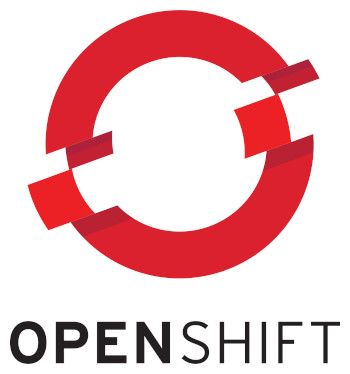OpenShift: Operators lifecycle using manifest files

4 min read | by Jordi Prats
With OpenShift we can use a nice UI to install and remove operators, but we can achieve exactly the same using manifests and kubectl (oc)
List available operators
If we want to take a look at what operators we can install on our OpenShift cluster we can list the PackageManifest using kubectl get:
$ kubectl get packagemanifests -n openshift-marketplace
NAME CATALOG AGE
citrix-cpx-with-ingress-controller-operator-rhmp Red Hat Marketplace 10d
rabbitmq-cluster-operator Community Operators 10d
postgresql Community Operators 10d
klusterlet-product Red Hat Operators 10d
infrastructure-asset-orchestrator-certified Certified Operators 10d
proactive-node-scaling-operator Community Operators 10d
citrix-ingress-controller-operator-rhmp Red Hat Marketplace 10d
rhpam-kogito-operator Red Hat Operators 10d
(...)
By using kubectl describe on any of them we can even get even more details about it under the status key:
$ kubectl describe packagemanifests example-operator -n openshift-marketplace | less
Name: example-operator
Namespace: openshift-marketplace
Labels: catalog=community-operators
catalog-namespace=openshift-marketplace
operatorframework.io/arch.amd64=supported
operatorframework.io/os.linux=supported
provider=External Secrets
provider-url=https://example.io
Annotations: <none>
API Version: packages.operators.coreos.com/v1
Kind: PackageManifest
Metadata:
Creation Timestamp: 2022-10-12T07:53:36Z
Spec:
Status:
Catalog Source: community-operators
Catalog Source Display Name: Community Operators
Catalog Source Namespace: openshift-marketplace
Catalog Source Publisher: Red Hat
Channels:
Current CSV: example-operator.v0.1.0
Current CSV Desc:
Annotations:
(...)
Installing an operator
Once we know which operator we want to install, we can create a Subscription object with it's details, such as:
- Namespace scope: If we want to install it for all the namespaces, we must create the subscription on the openshift-operators namespace, otherwise we'll need to create it on the relevant namespace
- Name of the channel to subscribe to: There might be several channels available, we'll need to check the PackageManifest to get the exact details
A simple subscription would look like this (All namespaces mode, from the stable channel and with automatic updates)
apiVersion: operators.coreos.com/v1alpha1
kind: Subscription
metadata:
name: example-operator
namespace: openshift-operators
spec:
channel: stable
installPlanApproval: Automatic
name: example-operator
source: community-operators
sourceNamespace: openshift-marketplace
To deploy the operator we can apply it using kubectl:
$ kubectl apply -f example/manifests/subscription.yaml
subscription.operators.coreos.com/example-operator configured
Once applied we'll be able to see a deployment get created in the openshift-operators namespace:
$ kubectl get deploy -n openshift-operators
NAME READY UP-TO-DATE AVAILABLE AGE
example-operator-controller-manager 1/1 1 1 46s
gitops-operator-controller-manager 1/1 1 1 18h
If we want to install a specific version, we'll need to specify the exact version using startingCSV and set the installPlanApproval to Manual to prevent automatic upgrades to later versions:
apiVersion: operators.coreos.com/v1alpha1
kind: Subscription
metadata:
name: example-operator
namespace: openshift-operators
spec:
channel: stable
installPlanApproval: Manual
name: example-operator
source: community-operators
sourceNamespace: openshift-marketplace
startingCSV: example-operator.v0.1.0
We can also add operator specific options under the spec.config key:
apiVersion: operators.coreos.com/v1alpha1
kind: Subscription
(...)
spec:
config:
tolerations:
- operator: "Exists"
Uninstalling an operator
To install the operator we just need to create the Subscription object, but to delete it we'll need to delete the ClusterServiceVersion as well.
We can start by deleting the Subscription:
$ kubectl delete -f example/manifests/subscription.yaml
subscription.operators.coreos.com "example-operator" deleted
Then we'll need to figure out which is the csv that have been installed (unless it is specified in the Subscription object with startingCSV):
$ kubectl get csv
NAME DISPLAY VERSION REPLACES PHASE
aws-efs-csi-driver-operator.4.10.0-202209280142 AWS EFS CSI Driver Operator 4.10.0-202209280142 aws-efs-csi-driver-operator.4.10.0-202209070827 Succeeded
example-operator.v0.1.0 Example Operator 0.1.0 example-operator.v0.0.9 Succeeded
keda.v2.7.1 KEDA 2.7.1 keda.v2.6.1 Succeeded
openshift-gitops-operator.v1.6.1 Red Hat OpenShift GitOps 1.6.1 openshift-gitops-operator.v1.6.0 Succeeded
route-monitor-operator.v0.1.422-151be96 Route Monitor Operator 0.1.422-151be96 route-monitor-operator.v0.1.408-c2256a2 Succeeded
Once we know which ClusterServiceVersion corresponds with the operator we want to uninstall we can delete it using kubectl delete as usual:
$ kubectl delete csv example-operator.v0.1.0
clusterserviceversion.operators.coreos.com "example-operator.v0.1.0" deleted
Posted on 24/10/2022